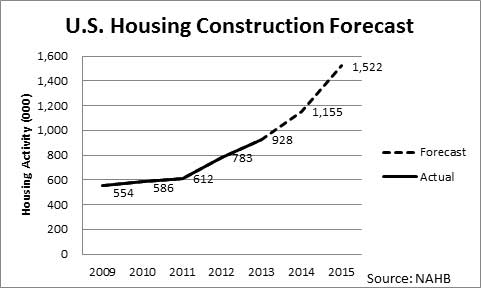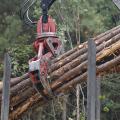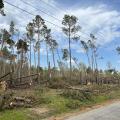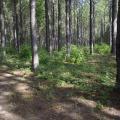Market Commentary
March 2014
Timber Market Outlook
By Dr. James Henderson, Extension Forestry
Slowly but surely markets for sawtimber are beginning to grow again after the sharp declines seen after the collapse of the U.S. housing market and recession. The Southern Forest Products Association reported southern pine lumber shipments for 2013 reached 15.026 billion board feet (Bbf) which is a 5% increase over the 2012 amount of 14.279 Bbf and a 27% increase over the 2009 volume of 11.279 Bbf. U.S. home construction continues to rise and the forecast is for continued growth. In 2009 the U.S. built about 554 thousand new homes and the forecast is that the U.S. should be building nearly 3 times that volume by 2015. So we are on pace for over 1 million homes built in 2014 and around 1.5 million in 2015. The overall U.S. economy is continuing to grow and recovering from the recession of the 2000's. Reflecting these improvements in lumber demand the south-wide 4th quarter average stumpage price for pine sawtimber was up 8% from this time last year according to Timber-Mart South. Mississippi stumpage prices as of the 4th quarter 2013 statewide averaged at $24 for pine sawtimber, $15 for pine chip-n-saw, $36 for mixed hardwood sawtimber, $9 for pine pulpwood, and $11 for hardwood pulpwood. Timber price reports for Mississippi are available at: MSUCares.com/forestry. Pulpwood markets in north Mississippi will obviously be disrupted by the closure of the IP paper mill in Courtland, Alabama. It is reasonable to assume that prices for pulpwood in some portions of north Mississippi will fall in 2014 as compared with 2013. So the outlook for Mississippi's timber markets are somewhat mixed. Sawtimber should show continued gains over the next several years and pulpwood in northern Mississippi may struggle as compared with previous years.

Previous Market Commentaries
November 2013-Mississippi Timber Markets Holding
May 2013-Mississippi Timber Markets Holding Up
November 2012-Timber Market Update
April 2012-Timber Market Update
February 2012-Timber Market Update
News
RAYMOND, Miss. -- Mississippi’s 2023 timber harvest is expected to set a record for the 21st century. “We are on pace to exceed 36 million tons of timber harvested, which would be the highest level we have experienced this century, surpassing the previous high set in 2005 prior to the Great Recession,” said Eric McConnell, an associate professor of forest business at Mississippi State University. The increased harvest helped Mississippi’s forestry industry remain in third place among the state’s agricultural commodities, with an estimated production value of $1.5 billion. That is a 9.6% increase from 2022.
RAYMOND, Miss. -- An increase in both the amount of timber harvested and delivered wood prices landed Mississippi’s forestry industry in third place among the state’s agricultural commodities. At an estimated production value of $1.3 billion, timber is up 15% from 2021. Poultry and soybeans ranked first and second, generating an estimated value of $3.8 billion and $1.8 billion, respectively, in 2022.
Success Stories
Annual forestry show gathers industry, highlights best logging practices
Year after year, the Mid-South Forestry Equipment Show attracts thousands of visitors. Canceled in 2020, as most large gatherings were because of the COVID pandemic, the show opened in 2021 with about 3,500 former and new attendees ready to discover the latest forestry equipment, safety guidelines, and timber-harvesting methods.
During his tenure as an engineer at Boeing, Ottis Bullock helped build machines that went into the air and to the moon, but he always had an interest in the trees that grew from the ground where he came of age.






